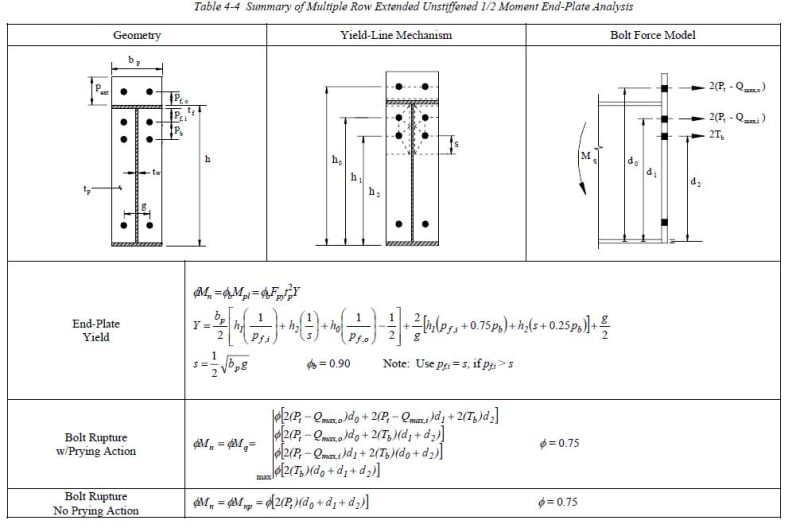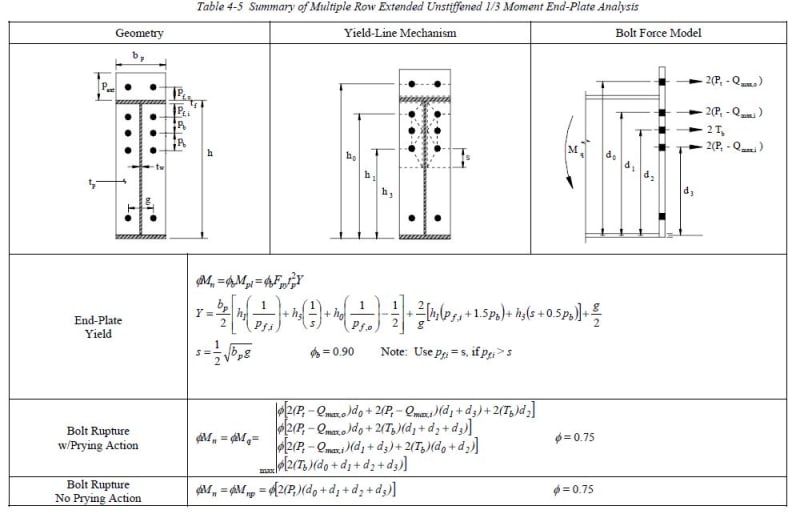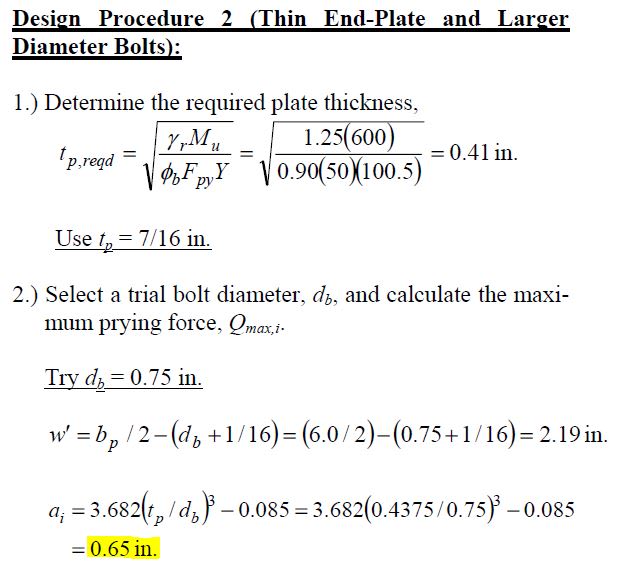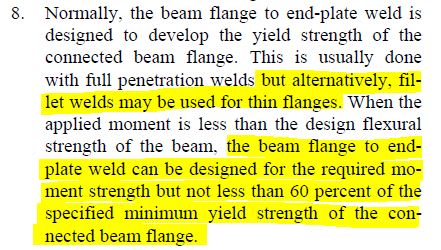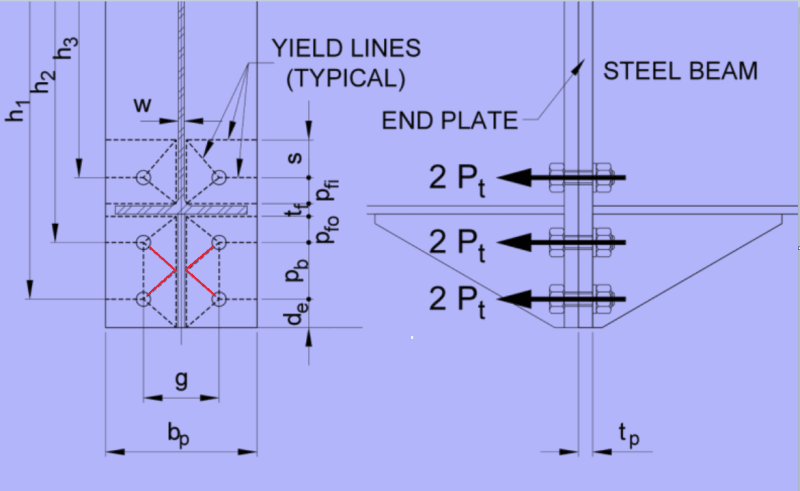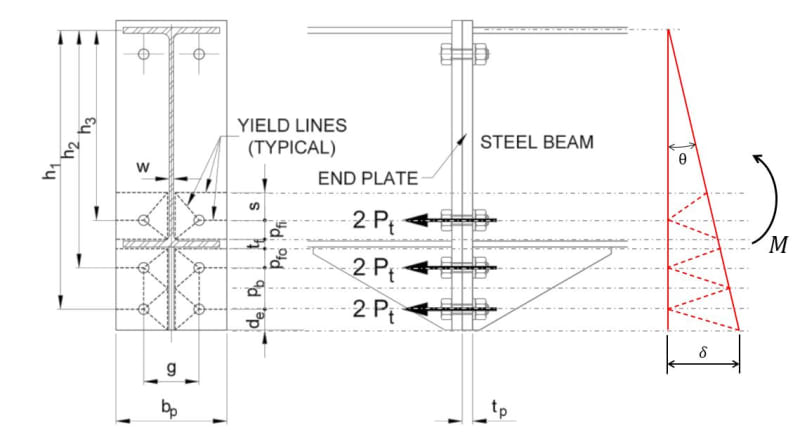I need to provide a moment connection to splice a beam. Space is limited and the entire length of beam cannot be installed in this existing building, so needs to go in 2 parts. Moment is always +ve and only need bolts on one side of the beam.
Does anyone see any contraindications for the connection (in sketch)
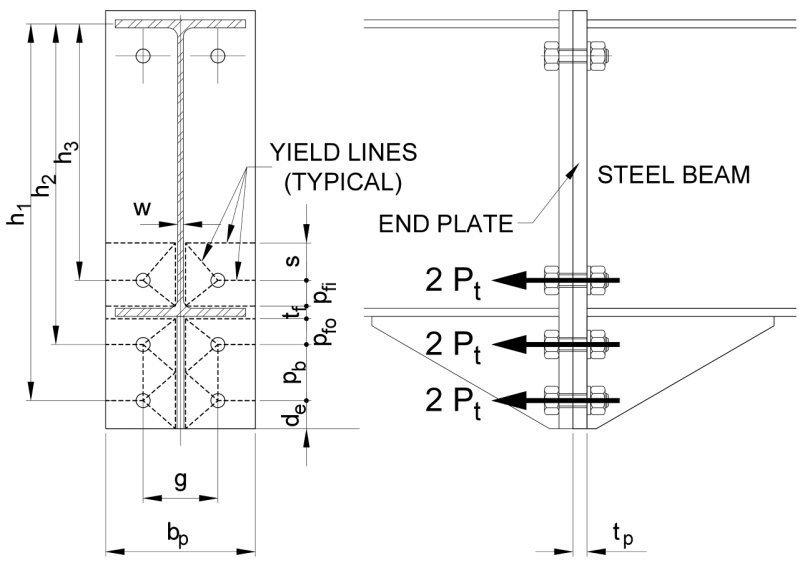 I propose to design?
I propose to design?
4 bolts at the one side doesn't do it unless I go to 1" dia and not 3/4" dia (client's preference). I also note the AISC uses a CJP or PJP weld at the flange to the end plate. Any reason this cannot be a fillet weld?
Dik
Does anyone see any contraindications for the connection (in sketch)

4 bolts at the one side doesn't do it unless I go to 1" dia and not 3/4" dia (client's preference). I also note the AISC uses a CJP or PJP weld at the flange to the end plate. Any reason this cannot be a fillet weld?
Dik

